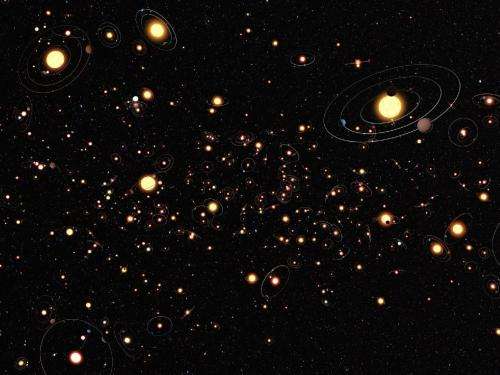Image: The Milky Way's 100 billion planets

(Phys.org) -- This artist's illustration gives an impression of how common planets are around the stars in the Milky Way. The planets, their orbits and their host stars are all vastly magnified compared to their real separations. A six-year search that surveyed millions of stars using the microlensing technique concluded that planets around stars are the rule rather than the exception. The average number of planets per star is greater than one. This means that there is likely to be a minimum of 1,500 planets within just 50 light-years of Earth.
The results are based on observations taken over six years by the PLANET (Probing Lensing Anomalies NETwork) collaboration, which was founded in 1995. The study concludes that there are far more Earth-sized planets than bloated Jupiter-sized worlds. This is based on calibrating a planetary mass function that shows the number of planets increases for lower mass worlds. A rough estimate from this survey would point to the existence of more than 10 billion terrestrial planets across our galaxy.
The results were published in the Jan. 12, 2012, issue of the British science journal Nature.
Provided by JPL/NASA




















